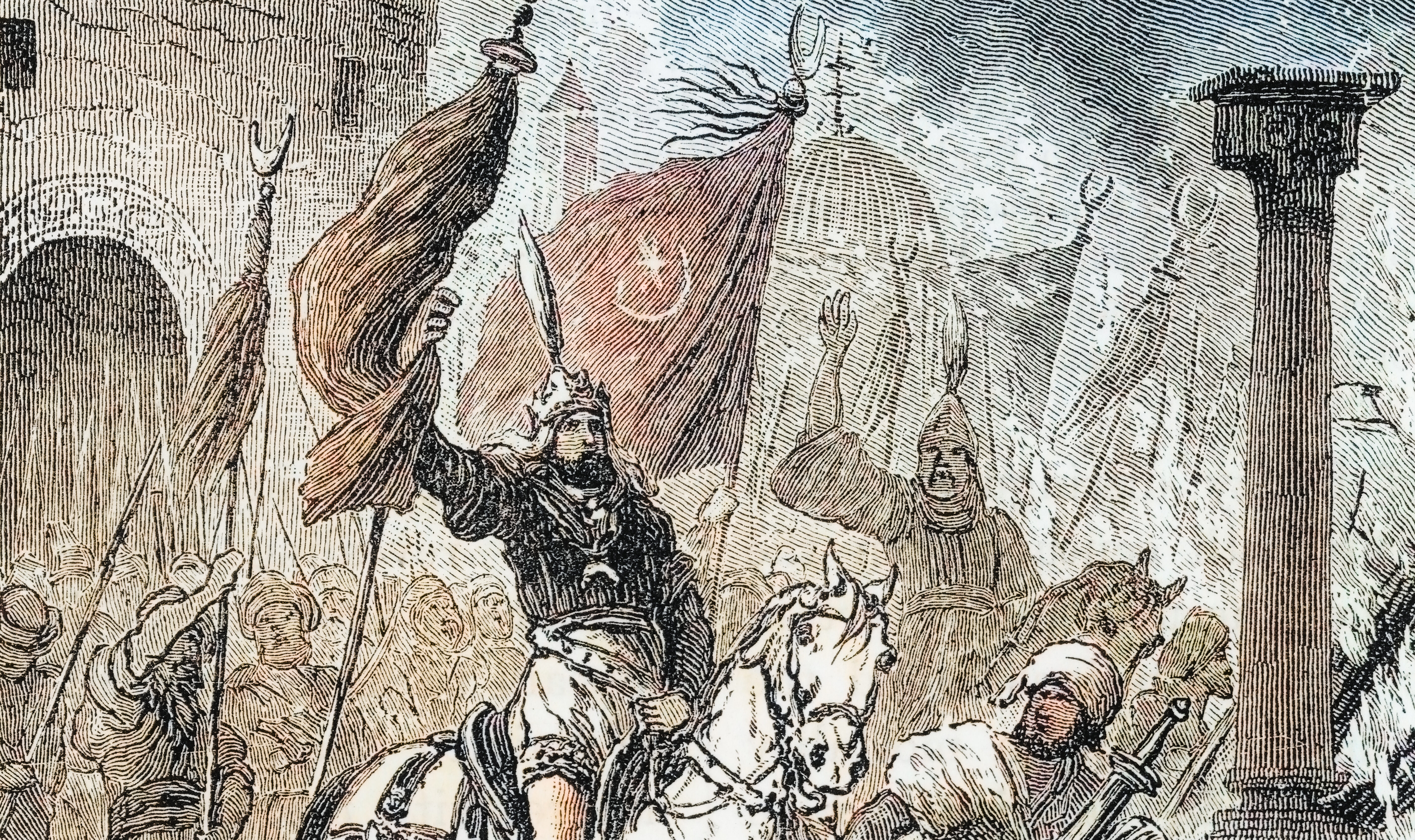The Return of the Kaiser-e-Rum
The rise of a Turkish-led order is a historic development in a region beset with perpetual chaos, and marks the end of four hundred years of European influence.

“When Troy shall overturn the Grecian state, And sweet revenge her conqu’ring sons shall call, To crush the people that conspir’d her fall,” John Dryden translated a prophecy in Virgil’s Aeneid. That power (for Virgil) was Rome, founded by a legendary Trojan. When the Ottoman Sultan Fâtih Sultan Mehmed conquered Constantinople in 1453—in no small part thanks to Central European tech transfer, incompetent Eastern Europeans squabbling, and Western European buck-passing—he took the the title of Kaisar-e-Rum (Caesar of Rome) and founded what he considered a tolerant and multiethnic if not necessarily liberal empire similar to the original, a second founding of the empire by another traveler from the East.
At the time of writing, the Turkish air force and drones are apparently strafing the assorted and unsupported Kurdish forces holed up in Manbij as the battle for Syria is reaching its conclusion. The secular authoritarian Assad has fallen, and, if rumors are true, has fled Damascus for Moscow. Turkish-supported rebel forces are victorious from Damascus to Northern Syria, from the coast to the desert.
Much has been made about the fall of Assad. It marks the end of a certain chapter of history, and also particularly marks the end of the Global War on Terror–era of American statecraft. After all, the Islamists won in Afghanistan and the Middle East. It also marks the formal end of Baathism, a strange, incoherent ideology that dominated the region from the 1940s and reached its apex during the peak Soviet power in the 1970s. The deaths of Saddam Hussein and Muammar Gaddafi and the collapse of the secular civilian leadership in Egypt meant that Syria was the only formally Westernized and secular country in the region. While they outlasted their Soviet masters, Baathist powers were beset by the same perpetual incompetence and infighting, and the ideology couldn’t stand the test of time. It is now one of those several malformed and subsequently defunct ideas that will be studied and marveled at by curious students of niche history in the future—an ideology that somehow managed to rule over a region culturally incompatible with democracy, secularism, or peace by sheer terror and force.
The fall of Damascus came faster than the last time it collapsed without a fight, in 750 AD. Reuters reported that the Syrian army command quietly notified the rump forces defending the capital that the republic had collapsed and the rebels were at the gates. There was social media footage of soldiers discarding their kit and camo and quietly changing into jeans and tee-shirts before slowly melting into the crowd.
The future of Syria doesn’t look promising. It will either go the way of Libya, a never ending civil war between various factions, or undergo a de facto partitioning by Israel and Turkey. The Israelis, as we observe, have already moved up to buffer and form a militarized zone to stop any future rebel push or ISIS resurgence. Syria might also face a long insurgency. People forget what happened in Iraq, when hundreds of thousands of Baathists melted and disappeared after the collapse, only to take up arms and start an insurgency against whoever was ruling from the center. It also marks the end of Iran’s “Axis of Resistance.” Hamas is destroyed, Hezbollah is decimated, Iran is isolated, and Russia is absent from both Africa and the Middle East.
Syria has fallen (for the moment) to someone who still has millions of dollars of U.S. State Department–issued bounty on his head. “The leading rebel group, Hayat Tahrir al-Sham, is a Sunni Muslim organization once affiliated with Al Qaeda. It has since renounced Al Qaeda, but the U.S. government classifies it as a terrorist group,” an indifferent New York Times casually noted—a fitting end to the revolutionary quarter-century of the GWoT, which marked the formative years of my youth and sent a generation to die in the desert for nothing.
In an interesting way, everyone understands that, even if one might not say it out loud. A great power that is less than 250 years old and only reached its stature in the last hundred years tried to reshape a region which has seen the rise and fall of some of the greatest empires in history. The Trojans and Greeks would both have understood what hubris and nemesis meant.
There is nothing that America can do, nor should she try. As President Donald Trump said, “this is not our fight”: a prudent realism that more statesmen should follow. The Middle East is a region we cannot shape nor should we try; the best option is perhaps detachment, allowing a local equilibrium to form organically.
But with the collapse of Syrian secularism, the victory of Turkish-backed Azerbaijan against Armenia, the rollback of Russian power and influence in both Ukraine and Syria partly on the strength of Turkish drones, and the utter destruction of the Axis of Resistance throughout the Levant, Turkey is now the central power (so to speak) of the region.
From the neutrality that history allows us, one can claim that Recep Tayyip Erdoğan has consolidated his position as one of the most powerful and far-sighted men of his generation. The man who took over Hagia Sophia and turned it back over to the word of God has his eyes firmly set on dominating the Aegean in the west and the Levant in the south.
Turkey is now at the peak of its regional influence in perhaps over a century, having defeated Russia in Armenia and Iran in Syria. The sons of Troy are eyeing glory again. With the fall of Assad and the collapse of Baathism, it is also curtains for secularism in the region, as well as the end of over 400 years of European influence, British, French or Russian.
A new and very different order is about to rise as a very old power returns to form. The region will not be the same again in our lifetime.
The post The Return of the Kaiser-e-Rum appeared first on The American Conservative.

